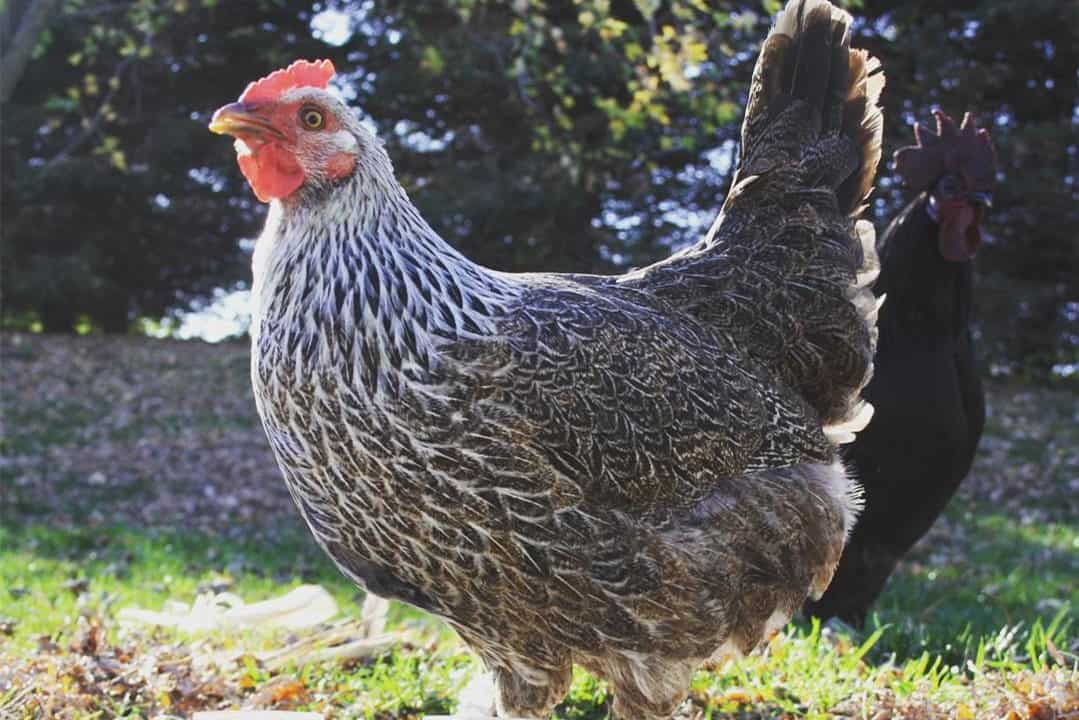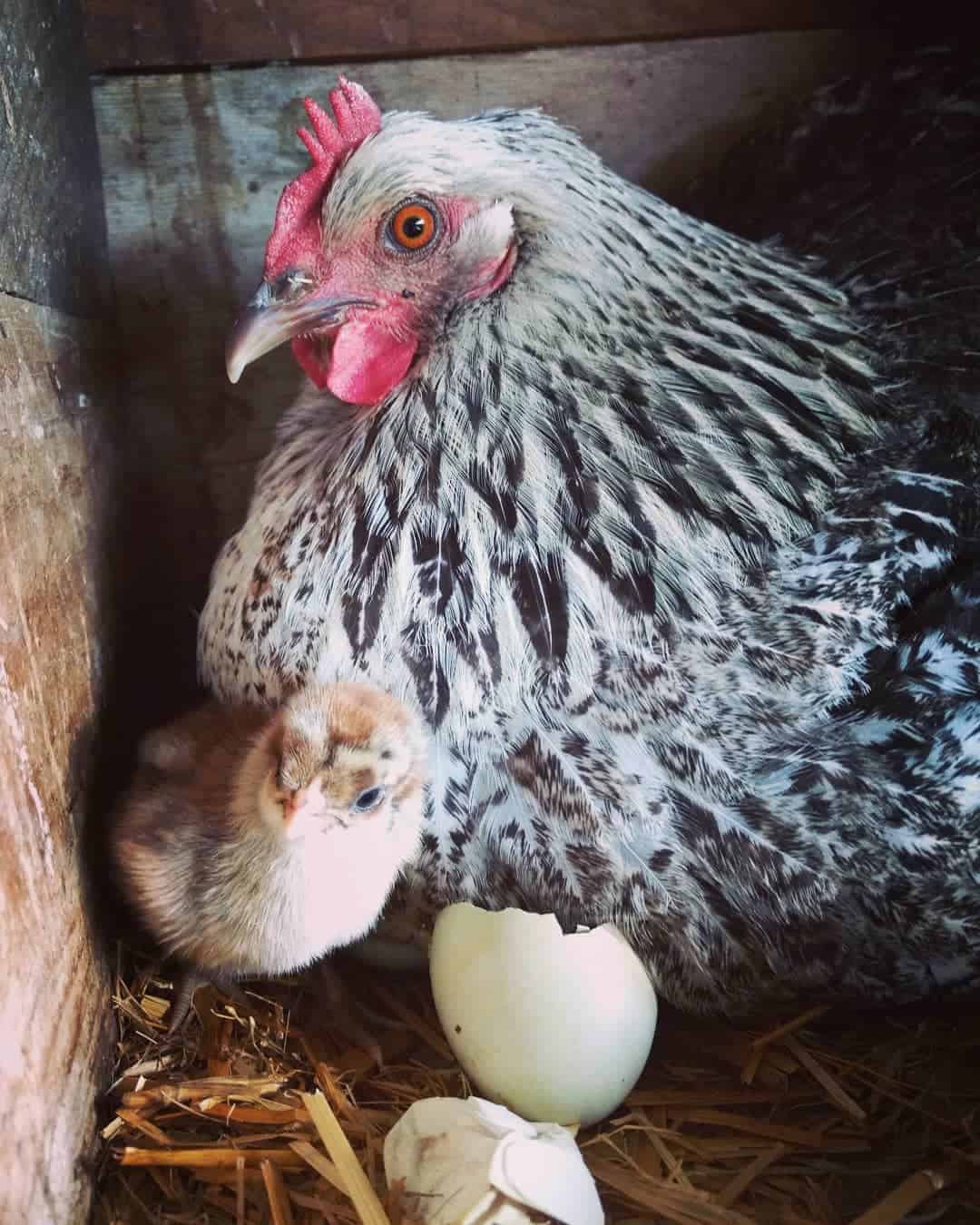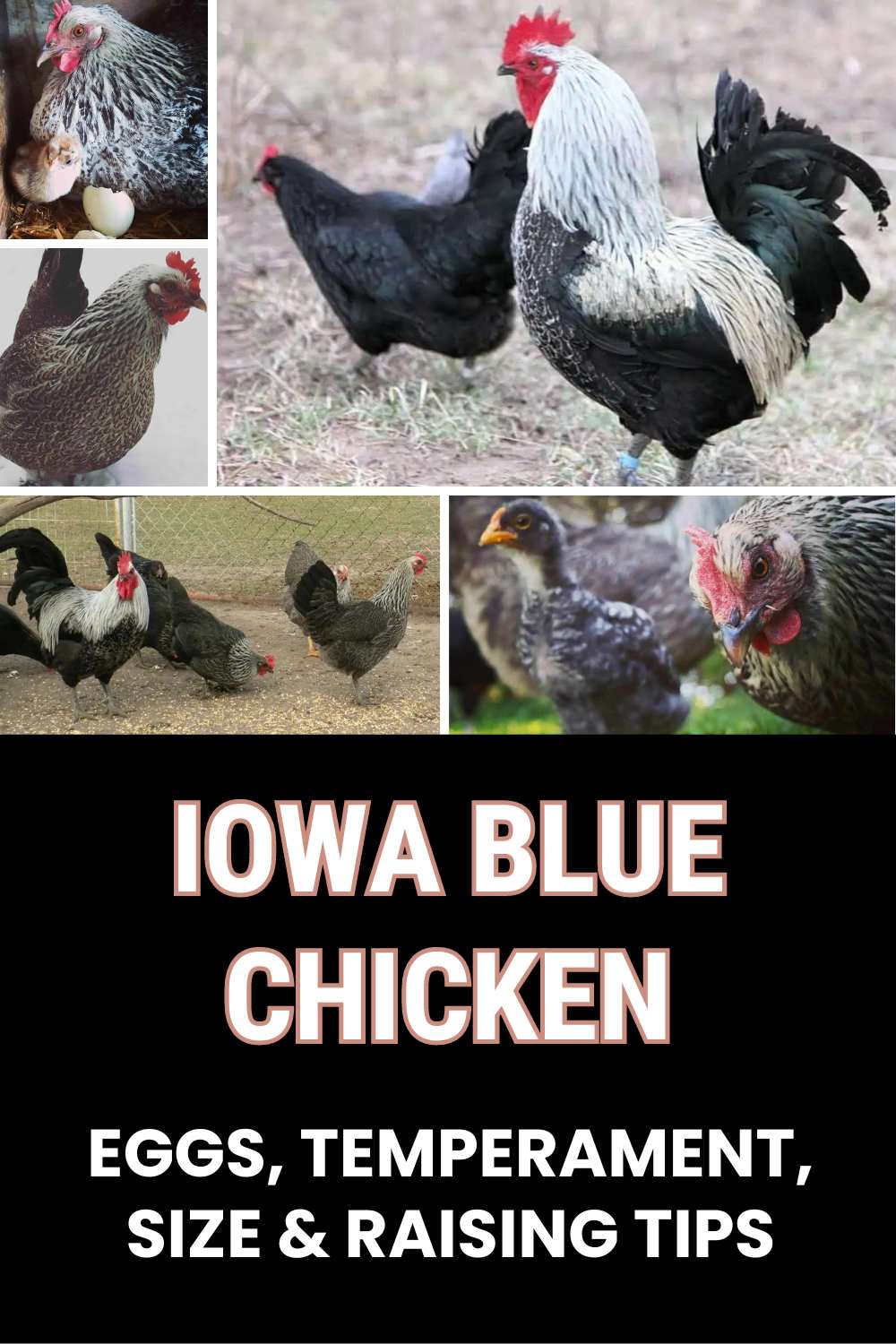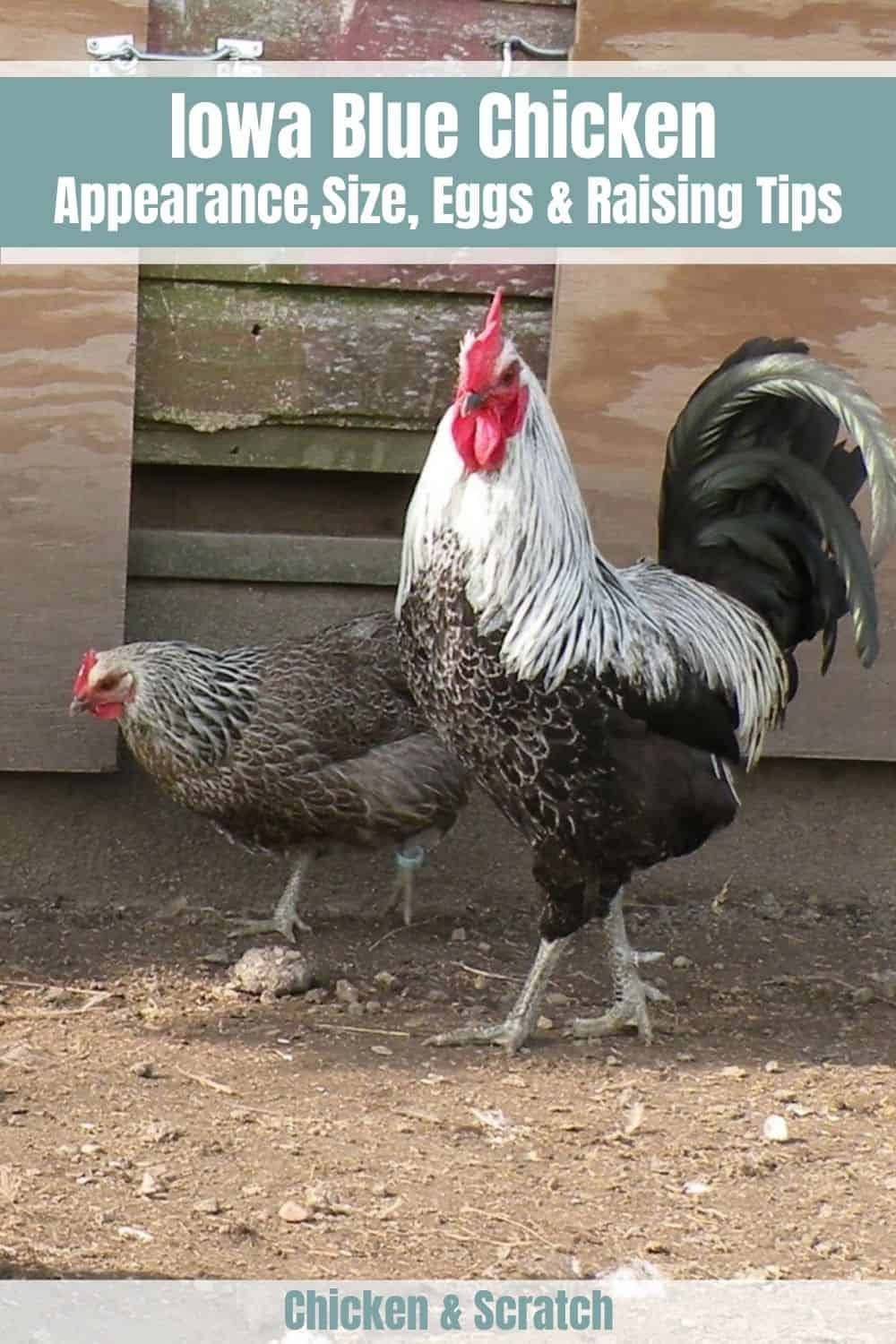If you are a chicken enthusiast and live in the midwest, you have probably heard of the Iowa Blue chicken. This chicken breed is known for being hardy and multipurpose as it is capable of both laying a good number of eggs and providing quality meat. On top of that, there are many merits to raising Iowa Blue chickens.
Where did the Iowa Blue chicken originate? What does it look like? How many eggs does it produce? How do I take care of it? Don’t worry! This guide will cover everything you need to know about the Iowa Blue chicken.
Where did the Iowa Blue chicken originate from?

There are many versions of how the Iowa Blue chicken came to be, yet there is one that chicken enthusiasts and locals believe to this day.
As the breed’s name suggests, the Iowa Blue chicken comes from Iowa, a state located in the midwest. Iowa is known to carry extreme climates — hot and humid during summer and cold during winter months.
While locals have found ways to adjust, livestock could not keep up with the differing climates. As such, farmers had trouble growing livestock, including chickens.
1920s: Birth of the Iowa Blue Chicken
The answer to this poultry dilemma surfaced in 1920 through John Logsdon of Canoe Township. It is on his farm near the Decorah area where the first Iowa Blue chickens were spotted.
It is said that the breed was the result of mating a Chinese pheasant cock with two hens, namely a Rhode Island hen and a Black Minorca hen. Both hens were chosen for the innate qualities of their breeds while the pheasant was chosen for its ability to stand the heat and cold.
Logsdon’s wife recalls a different story, though, saying a White Rock hen built a nest under a building in their farm. The hen later came out with chicks that had a unique appearance which we now call the Iowa Blue chicken.

1960s: Dwindling population
Even though its origin remained a mystery, poultry raisers saw the potential of the breed. Because of this, hatcheries continued growing Iowa Blue chickens in the 1960s.
However, in the same period, poultry farms started closing down which saw the dwindling population of this breed.
Luckily, there were chicken breeders who kept Iowa Blue flocks and preserved the breed.
21st century: Breed preservation
Entering the 21st century, Iowa Blue chicken enthusiasts came together with the same goal of preserving the Iowa Blue chicken breed.
In fact, the popularity of this breed rose again in 2010 with breeders raising flocks of this multipurpose breed.
What does the Iowa Blue chicken look like?

The Iowa Blue chicken is among the breeds that are not officially recognized by organizations such as the American Bantam Association and the American Poultry Association. As a result, there are no official breed standards for this breed.
However, there are clubs like the Iowa Blue Chicken Club that are dedicated to the breed itself and have their standards in terms of appearance.
Size
The size of Iowa Blue chickens differs depending on their gender. Cocks usually weigh around 8 pounds while hens weigh less at around 7 pounds.
A cockerel or young rooster typically has a weight of 7 pounds, while a pullet or a hen that is less than a year old has a weight of 6 pounds.
Body features
The Iowa Blue chicken has one medium comb that has a thick base and six points that are well-defined.
There are no wrinkles on this breed’s fine-textured face and it holds a medium-length and slightly curved beak, large round eyes, and medium earlobes and wattles.
The breed has a medium-sized head connected to a moderately long neck that blends into the shoulders. It has a broad body structure with medium-length wings, a strong and moderately deep breast, and a tail that is a 70-degree above horizontal angle.
Color

Despite its name, the Iowa Blue chicken does not have blue-colored feathering.
The Iowa Blue chicken has a silvery-white head with a red comb, ear lobes, and wattles. This breed carries a dark horn beak that lightens at the tip and dark brown eyes. In terms of shanks and toes, these are slate.
For its plumage, the neck and upper breast are white with a black stripe down the center that transitions into black with white lacing. The feathers in the lower parts of the body such as the lower breast, wings, tails, and legs are bluish-black or gray with penciling.
Male vs female colors
Interestingly, you can tell the gender of the Iowa Blue chicken because of some differences in body coloring, particularly in the back and saddle.
The color of the back and saddle of the male Iowa Blue chicken is like that of its neck. Meanwhile, the female’s back is bluish to grey with penciling.
What is the Iowa Blue chicken’s personality?

If chicken enthusiasts would describe the Iowa Blue chicken’s personality and temperament in one word, it would be hardy.
What makes this breed stand out among other chicken breeds is its innate capability of surviving on its own.
As a matter of fact, raisers of this breed have pointed out that they are already capable of survival as early as a couple of hours old. Iowa Blue chicks will already start to crouch and pop or simply hop. Hatchlings will also crouch down if approached from above.
Naturally, Iowa Blue chickens are great active foragers and will surely thrive in free-range setups.
They enjoy roaming large areas in search of food. Chickens of this breed are able to find their own food and determine what is good and not good for consumption.
If given no choice, they are also able to thrive in confined spaces, though open areas are more preferred.
Watch Iowa Blue chickens enjoying the free roaming space in their farm:
Compared to other breeds, the Iowa Blue chicken matures early due to its strong survival instincts. It is friendly to humans, fairly docile, and able to heed simple commands so you will have no trouble controlling your flock.
As mentioned earlier, the Iowa Blue chicken is multipurpose as they have good meat and eggs. Hens will go broody when laying eggs should the need arise. They are instinctively excellent mothers that look after their chicks.
Male Iowa Blue chickens, on the other hand, are strong fighters and do not think twice about protecting their flock against hawks and other creatures.
On top of all these characteristics, Iowa Blue chickens are built to withstand the climate of Iowa. This means they are able to flourish both in the summer months where the heat may rise and in the cold months where temperatures drop.
Can the Iowa Blue chicken produce many eggs?

The straight-up answer to this question is yes. The Iowa Blue chicken lays an average of 180 eggs in a year. This number is comparably significant considering that Iowa Blue hens are considered broody.
Is a broody hen good? In a way, broody hens are great add-ons to your flock because they are good egg layers and have natural motherly instincts.
If you’re not familiar with the term, a broody hen is one that stops laying eggs to care for and hatch the eggs that were produced previously. A hen being broody can be triggered by either instincts or hormones.
Here is a video of a broody Iowa Blue hen hatching its eggs:
With these qualities, Iowa Blue hens are able to care for their chicks well, making sure they grow up good and healthy. Hens of this breed look after their chicks even though they are already capable of surviving on their own.
Because of their maternal instincts, Iowa Blue hens can also care for the hatchlings of the other breeds in your flock. They will thrive together with the other hens and hatchlings in your coop.
Going back to egg production, expect an abundance of eggs all year round from this good egg-laying breed.
Iowa Blue chicken eggs usually come in medium size and are lightly tinted brown. Their eggs are of high quality especially when hens are given the right nutrition and care they need.
What health issues should I look out for?

Because Iowa Blue chickens are hardy, there are no significant health issues that you should watch out for in the breed. They can adjust to both the heat and the cold so you will not typically encounter weather-related health issues.
However, you still have to be prepared for diseases and illnesses that affect chickens in general. It is your responsibility as the chicken farmer to familiarize yourself with these so you can spot and address them right away.
Fowl Cholera
A chronic bacterial disease caused by Pasteurella Multocida, fowl cholera causes diarrhea, loss of appetite, lameness, and discharge which may lead to death if left undetected and untreated.
Though this mostly affects older chickens, you should still watch out for it as it is highly contagious. The good news, though, is that it is preventable with vaccinations.
Gumboro
Another disease to look out for is Gumboro or the Infectious Bursal Disease. Mainly affecting young chickens, this disease hits the immune system which leads to failure and eventually, death.
It is caused by a virus and is highly infectious and may affect flocks when untreated. Decontamination is important should it hit your farm but it may be a challenge because the virus can still thrive in several conditions.
Marek’s Disease
The herpes virus can also attack chickens which results in Marek’s Disease. People refer to this disease as fowl paralysis because it targets the nerves and causes tumors in the internal organs of your chicken.
Much like Gumboro, it is more prevalent in young chickens.
How do I prevent this?
Prevention is definitely better than cure. Not only does it cost less, but it also saves you the stress and hassle of having to deal with symptoms, treatments, and possibly the loss of life.
Giving your flock balanced nutrition, proper vitamins, and a clean place to live in is crucial in boosting their immune system. Strong immunity makes them less susceptible to diseases and stronger to fight them off.
In addition to that, keep their vaccinations up to date to prepare them for possible viruses that may hit them.
4 Tips for Raising Iowa Blue Chickens

Iowa Blue chickens can survive on their own with little care given to them. However, you still need to provide them what they need and even more for them to be able to thrive and grow.
1. Give them proper nutrition
As foragers, Iowa Blue chickens are able to look for their own food. This does not ensure, though, that they will get enough nutrients their body needs. A well-balanced diet keeps them healthy and strong.
Provide them with chicken feed that has all the vitamins and nutrients they need. On top of that, supplement their diet with natural food as treats like pumpkin, potatoes, and basil.
2. Provide a large area for roaming
Iowa Blue chickens will appreciate big open spaces where they can roam freely. As mentioned previously, they will grow and develop better in free-range conditions.
A bigger area also prevents your chickens from being cooped up which can cause weight gain and make them unhealthy. With space for roaming, your chickens can get their daily exercise which contributes to their overall health.
3. Schedule vet visits
See your veterinarian every once in a while to have your chickens checked. Also keep their vaccinations updated as this will prevent your chickens from getting severe cases of poultry diseases and illnesses.
Should you have concerns about your flock’s health, feel free to seek assistance from your vets as they are trained professionals to handle animal health.
4. Keep your area clean
Sanitation is crucial in keeping your flock healthy. Dirty coops and living spaces may lead to health problems as bacteria and viruses thrive in poorly maintained areas.
Set a date every week, or daily if possible, dedicated to cleaning feeding equipment, the coop, and other places where your chickens spend time in.
In Summary
The Iowa Blue chicken breed is hardy and innately good at surviving on its own. Iowa Blue chickens are able to forage and even defend themselves should the need be. To add, they are also able to adjust to the heat and cold.
As a dual-purpose breed, Iowa Blue chickens provide quality chicken meat and a good amount of eggs. In terms of temperament, they are friendly and docile. All these traits make them a great breed to raise. If you’re looking for a breed to grow in your backyard, the Iowa Blue chicken is worth considering.


Joseph Hudson has been raising chickens for over 15 years. In 2018, he completed the Agriculture & Natural Resources program at Mt. San Antonio College. He currently raises over 1400 chickens on his 7.5-hectare farm. He keeps sharing his experience on raising healthy and happy chickens on Chicken Scratch The Foundry.







